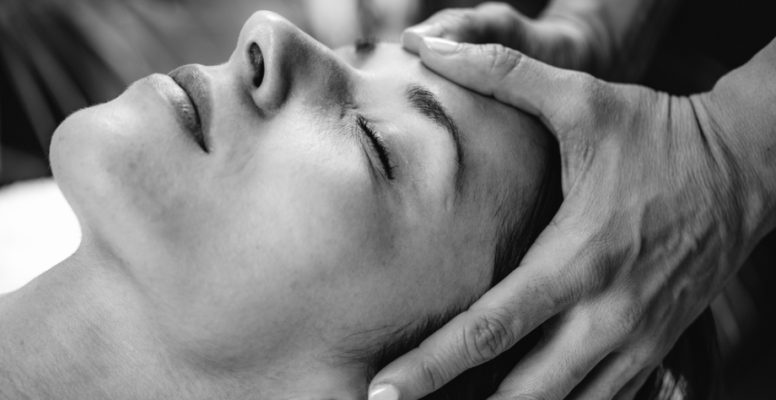
Traveling can be an exciting, enriching experience, but for those with Postural Orthostatic Tachycardia Syndrome (POTS), it can also come with unique challenges. POTS is a condition that affects blood flow, often causing symptoms like dizziness, fatigue, and rapid heart rate when standing up, which can make even routine daily tasks feel overwhelming. Managing these symptoms on the go might seem daunting, but with some preparation and the right mindset, travel can still be enjoyable and within reach.
In this guide, we will provide practical advice, tips, and encouragement for those with POTS who want to explore new places while staying as comfortable and symptom-free as possible. Whether you’re planning a weekend getaway or an overseas adventure, these strategies will help you navigate your trip with greater ease and confidence.
Understanding the Challenges of Traveling with POTS
Traveling with Postural Orthostatic Tachycardia Syndrome (POTS) involves navigating a variety of unique obstacles, but with awareness and strategic planning, these hurdles can be effectively managed.
Common Symptoms and How They Affect Travel
One of the first steps in planning a trip with POTS is understanding how the condition’s symptoms may impact different aspects of travel. Common symptoms of POTS include dizziness, rapid heart rate, fatigue, and sometimes “brain fog,” a form of cognitive fatigue. These symptoms can arise suddenly when standing up, changing positions, or being in high-stress environments—often unavoidable in travel scenarios.
Long flights, car rides, and other forms of extended sitting are particularly challenging, as they can lead to blood pooling in the legs, worsening dizziness and causing lightheadedness. The fatigue that comes with POTS can be exacerbated by time zone changes, lack of sleep, and unfamiliar routines, making it important to plan time to rest. Stress, which may stem from navigating busy airports, adjusting to new places, or simply being out of your comfort zone, can also elevate heart rate and contribute to an overall increase in symptoms. For many, travel demands an adjustment period where these symptoms may flare, so recognizing this can help you prepare and implement ways to manage symptoms effectively.
Addressing Common Concerns About Traveling with POTS
Traveling with POTS Guide brings several common concerns, but these can often be alleviated with planning and awareness.
- Long Flights: Air travel can be daunting with POTS, given the extended sitting, limited leg movement, and low cabin humidity that can lead to dehydration. Strategies such as booking aisle seats, wearing compression stockings, and taking short walks during the flight can help prevent blood pooling and minimize dizziness.
- Long Car Rides: For road trips, the combination of sitting for long hours and lack of movement can exacerbate symptoms. Scheduling frequent breaks to stand up, stretch, and move around can help maintain blood flow and prevent stiffness. If possible, traveling with a companion who can share the driving allows you to take breaks and rest as needed.
- Unfamiliar Environments: New destinations often mean adjusting to different climates, altitudes, and time zones, all of which can affect your body’s response to POTS. High altitudes can exacerbate dizziness and shortness of breath, so if you’re traveling somewhere at elevation, plan for a day or two of acclimatization.
Pre-Trip Planning Tips for POTS Patients
Proper preparation can make all the difference when traveling with POTS, ensuring that you’re equipped to handle challenges and enjoy your journey.
Choosing the Right Mode of Travel
Air Travel Considerations
When flying with POTS, several strategies can help make your journey smoother. First and foremost, try to book direct flights whenever possible. Layovers can lead to extended periods of sitting and rushing between gates, which can exacerbate symptoms. Additionally, select seats that provide more legroom—an aisle seat in an exit row or a premium economy seat can make it easier to stretch your legs and move around during the flight.
Don’t hesitate to inform the airline about your condition at the time of booking. Many airlines are accommodating and can provide assistance such as early boarding or wheelchair support, allowing you to board the plane at your own pace. Consider packing a small medical kit with essential supplies, including electrolyte tablets, snacks, and any necessary medications, to have on hand during your flight. Also, stay hydrated by requesting extra water throughout the flight and avoiding dehydrating beverages like alcohol and caffeine.
Traveling by Car or Train
Traveling by car or train can offer more flexibility and comfort for those with POTS. When driving, schedule frequent breaks every one to two hours to get out, stretch, and walk around. This not only helps with circulation but also allows for restroom breaks and a chance to hydrate. If possible, plan your route to include scenic stops, which can make the journey more enjoyable and less rushed.
Adjusting seating arrangements can also enhance comfort. In a car, use cushions or lumbar support to ensure a comfortable seating position. If traveling by train, opt for a seat with more legroom, and try to reserve a table seat where you can get up and move around without disrupting other passengers. Utilizing a travel pillow can help support your neck during travel and improve overall comfort.
Packing Essentials for Traveling with POTS
Hydration and Nutrition
Staying hydrated is crucial when traveling with POTS. Dehydration can worsen symptoms, so plan to pack electrolyte drinks or powdered electrolyte packets to mix with water during your trip. These drinks help maintain blood volume and can alleviate symptoms related to low blood pressure. Additionally, bring snacks that are high in salt and carbohydrates, such as nuts, pretzels, or energy bars, to help maintain energy levels and blood pressure throughout your travels.
Medical Supplies and Documentation
Carrying your medications is essential when traveling with POTS. Ensure you have enough to last the duration of your trip, along with a few extra days’ worth, just in case of delays. Don’t forget to include any other necessary items, such as compression stockings, which can help improve blood flow and prevent blood pooling in the legs during long periods of sitting.
It’s also wise to have medical documentation readily available. This includes prescriptions, a list of your medications, and any doctor’s notes outlining your condition. Having these documents can facilitate easier access to medications or medical assistance if needed during your trip. Keeping this information organized and accessible—perhaps in a travel wallet—can reduce stress and ensure that you’re prepared for any situation that may arise.
Tips for Managing POTS Symptoms During Travel
Successfully managing POTS symptoms while traveling requires a combination of hydration, stress management, and adaptability. By employing the following strategies, you can create a more enjoyable travel experience despite the challenges posed by the condition.
Staying Hydrated and Maintaining Salt Intake
One of the most critical aspects of managing POTS symptoms while traveling is staying hydrated. Dehydration can lead to a drop in blood volume, exacerbating dizziness, fatigue, and lightheadedness. Aim to drink plenty of fluids, especially water, throughout your journey. Carry a refillable water bottle to ensure easy access to hydration, and consider electrolyte drinks or tablets to help maintain electrolyte balance. These can be particularly beneficial during flights or long car rides when fluid intake may be limited.
In addition to hydration, maintaining an adequate salt intake is essential for those with POTS. Sodium helps retain fluids and can support blood volume. Pack salty snacks like pretzels, nuts, or chips to munch on during travel. If you’re unsure of your salt intake while eating out, don’t hesitate to ask for extra salt on your meals, or consider carrying packets of salt for convenience. This proactive approach can significantly alleviate symptoms and help you feel more stable throughout your trip.
Managing Stress and Fatigue
Relaxation Techniques
Travel can be stressful, and stress can exacerbate POTS symptoms. To manage anxiety and promote relaxation, consider employing relaxation techniques during your journey. Deep breathing exercises are a quick and effective way to calm your mind and body. Practice inhaling deeply through your nose for a count of four, holding for four, and exhaling through your mouth for a count of four.
Incorporating meditation apps into your travel routine can also be beneficial. Many apps offer guided meditations for mindfulness exercises that can help you relax, especially in high-stress situations like airport security or crowded areas. Additionally, listening to calming music or podcasts can provide a mental escape and reduce stress while traveling. Consider creating a travel playlist or downloading episodes of your favorite podcasts in advance.
Rest and Sleep Planning
Managing rest and sleep during travel is crucial for keeping symptoms at bay. Sleep disruptions can worsen fatigue and lead to an increase in POTS symptoms. To improve sleep quality, invest in travel-friendly accessories such as neck pillows for support and eye masks to block out light.
Plan for rest periods throughout your travel itinerary. If you’re traveling across time zones, schedule downtime to help your body adjust. Listen to your body and don’t hesitate to take breaks to recharge, whether it’s a quick nap or simply sitting quietly for a few moments. If you find it challenging to sleep on the go, consider using relaxation techniques or gentle stretches to promote better rest.
Adjusting to Time Zones and Climate Changes
Traveling across time zones can significantly impact your body’s internal clock, especially for individuals with POTS. To ease the transition, try gradually shifting your sleep schedule a few days before departure. Adjust your bedtime and wake-up time by 15-30 minutes each day to align with your destination’s time zone.
Be aware of how climate changes, particularly heat, can influence POTS symptoms. Heat can exacerbate dizziness and fatigue due to increased blood pooling. To manage this, prioritize staying cool during your travels. Wear breathable clothing, take advantage of air conditioning, and avoid prolonged exposure to direct sunlight. If you find yourself in a hot climate, seek shade or air-conditioned spaces whenever possible, and continue to drink plenty of fluids to stay hydrated.
Navigating Your Destination with POTS
Traveling with POTS doesn’t mean you have to compromise on the enjoyment of your destination. By choosing the right accommodations and planning activities thoughtfully, you can create a more manageable travel experience that allows you to explore without exacerbating your symptoms.
Finding POTS-Friendly Accommodations
When it comes to choosing accommodations, opt for POTS-friendly hotels that prioritize your comfort and convenience. Look for hotels that are close to amenities and attractions you plan to visit. This will help minimize walking and reduce the strain on your body. Proximity to restaurants, shops, and entertainment can make a significant difference in how much energy you expend during your stay.
Additionally, consider booking accommodations that offer in-room amenities such as mini-fridges. This allows you to store hydration drinks, snacks, and any medications you might need, making it easier to maintain your health and energy levels. Look for hotels with easy access to elevators, and check reviews to see if previous guests have noted the accessibility of the property. If possible, request a room on the first floor or close to elevators to further reduce walking distances.
Planning Activities and Outings with POTS in Mind
Prioritizing and Pacing Activities
When planning your itinerary, it’s crucial to prioritize activities that interest you while considering your energy levels. Make a list of must-see attractions and events, but don’t overwhelm yourself by trying to do everything in one day. Instead, pace your activities by scheduling downtime between outings. This not only allows your body to recover but also gives you time to relax and recharge.
Consider blocking off at least an hour or two each day to rest, whether it’s returning to your hotel for a short nap or simply finding a comfortable spot to sit and enjoy your surroundings. Remember, it’s perfectly okay to adjust your plans if you’re feeling fatigued or overwhelmed—listening to your body is key.
Accessible Transportation Options
Navigating a new destination can be challenging, especially for those with mobility concerns. To make your travels easier, research and utilize accessible transportation options. Taxis, ride-sharing services like Uber or Lyft, and local transportation systems often offer options that require minimal walking.
When booking ride shares, you can usually request vehicles with larger trunk space or additional room for comfort. If using public transportation, check the availability of buses or trains with accessible seating and minimal walking distances between stops. In larger cities, consider downloading local transit apps that provide real-time information on accessible routes, schedules, and nearby stops.
Additionally, if you plan to explore the area on foot, consider using a mobility aid like a folding cane or lightweight wheelchair if necessary. Many destinations also have scooter rentals available, which can help reduce fatigue and increase your mobility.
What to Do If Symptoms Flare Up While Traveling
Even with careful planning, symptoms of POTS can sometimes flare up unexpectedly while traveling. Understanding how to manage these situations effectively can make a significant difference in your overall travel experience.
Managing Flare-Ups On the Go
When you feel a flare-up coming on, it’s important to act quickly to alleviate symptoms. Here are some practical tips for managing flare-ups while you’re on the move:
- Find a Quiet Space: If you start feeling dizzy, fatigued, or unwell, look for a quiet area where you can rest. This could be a secluded bench, a quiet corner in a café, or even your hotel room. Reducing noise and visual stimulation can help calm your body and mind, allowing you to recover more quickly.
- Elevate Your Legs: Elevating your legs can help improve blood circulation and relieve some of the pressure on your heart. If you’re in a public place, try to find a comfortable position where you can prop your feet up on a chair or bench. If you’re in your accommodation, lie down and elevate your legs on pillows.
- Hydrate and Snack: Drink water and have a small, salty snack to help manage your symptoms. Staying hydrated is vital, and consuming snacks that contain electrolytes can also support your body during a flare-up.
When to Seek Medical Help
While many flare-ups can be managed with self-care techniques, there may be situations where it’s necessary to seek medical attention. It’s important to be aware of when to get help:
- Severe Symptoms: If you experience severe symptoms such as chest pain, shortness of breath, or fainting, seek immediate medical help. These symptoms could indicate a more serious underlying condition that requires prompt attention.
- Inability to Recover: If your symptoms don’t improve after resting, hydrating, and following your usual management strategies, it may be time to consult a healthcare professional. Persistent dizziness, fatigue, or any other troubling symptoms warrant further investigation.
- Carry Medical Documentation: Always have medical documentation or a doctor’s note that outlines your condition, medications, and emergency contact information. This can be invaluable if you need to seek medical help while away from home.
Conclusion
Traveling with Postural Orthostatic Tachycardia Syndrome (POTS) presents unique challenges, but with the right strategies, preparation, and mindset, it can also be an enriching experience. By understanding your condition, planning meticulously, and prioritizing self-care, you can minimize the impact of symptoms and enjoy your journeys to the fullest.
While the road may have its ups and downs, your adventures can be rewarding and memorable. Embrace the beauty of travel, connect with new environments, and don’t hesitate to adapt your plans as needed. By being prepared and informed, you can navigate the world with POTS and create lasting memories that inspire and uplift you. Safe travels!

















